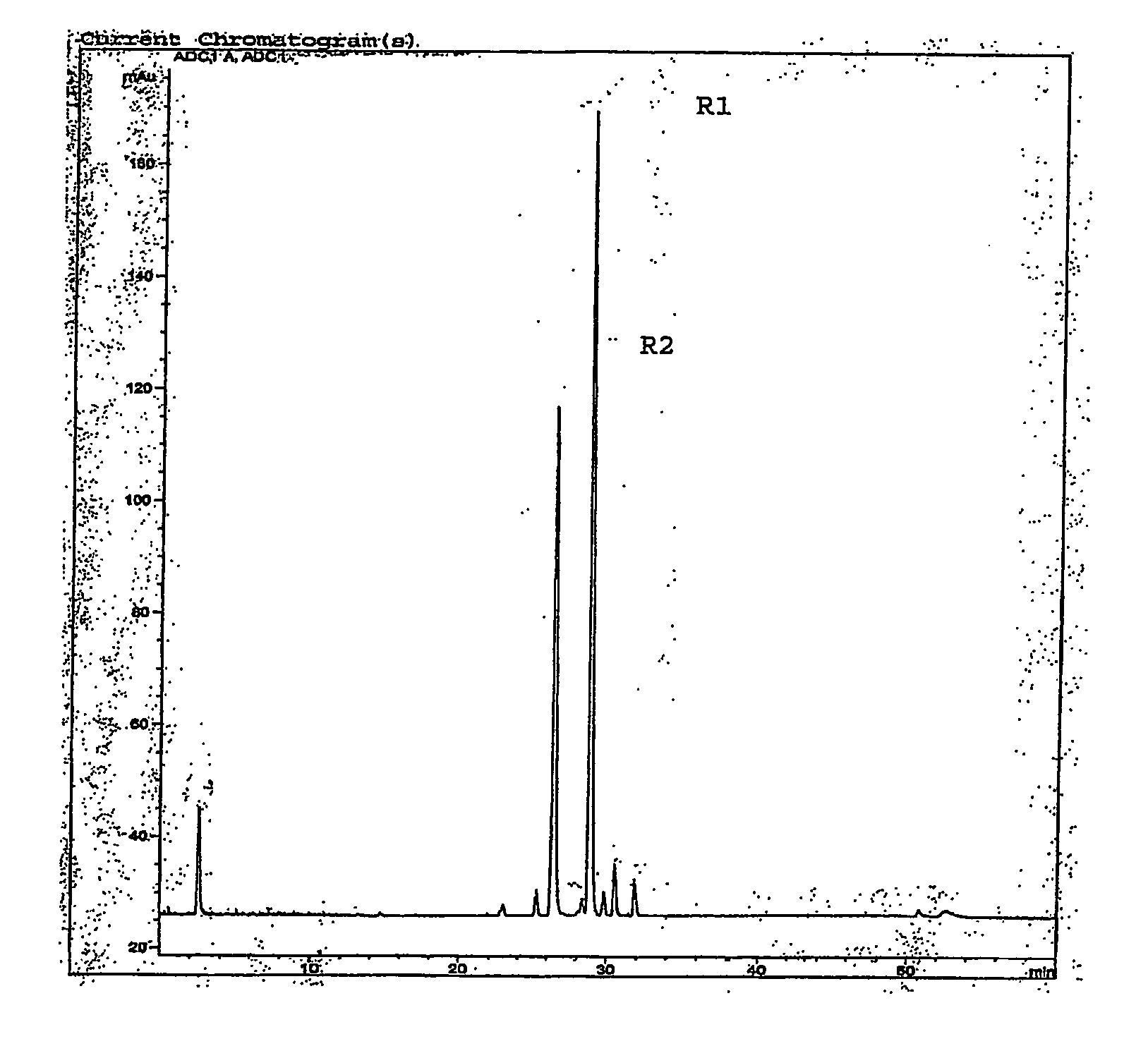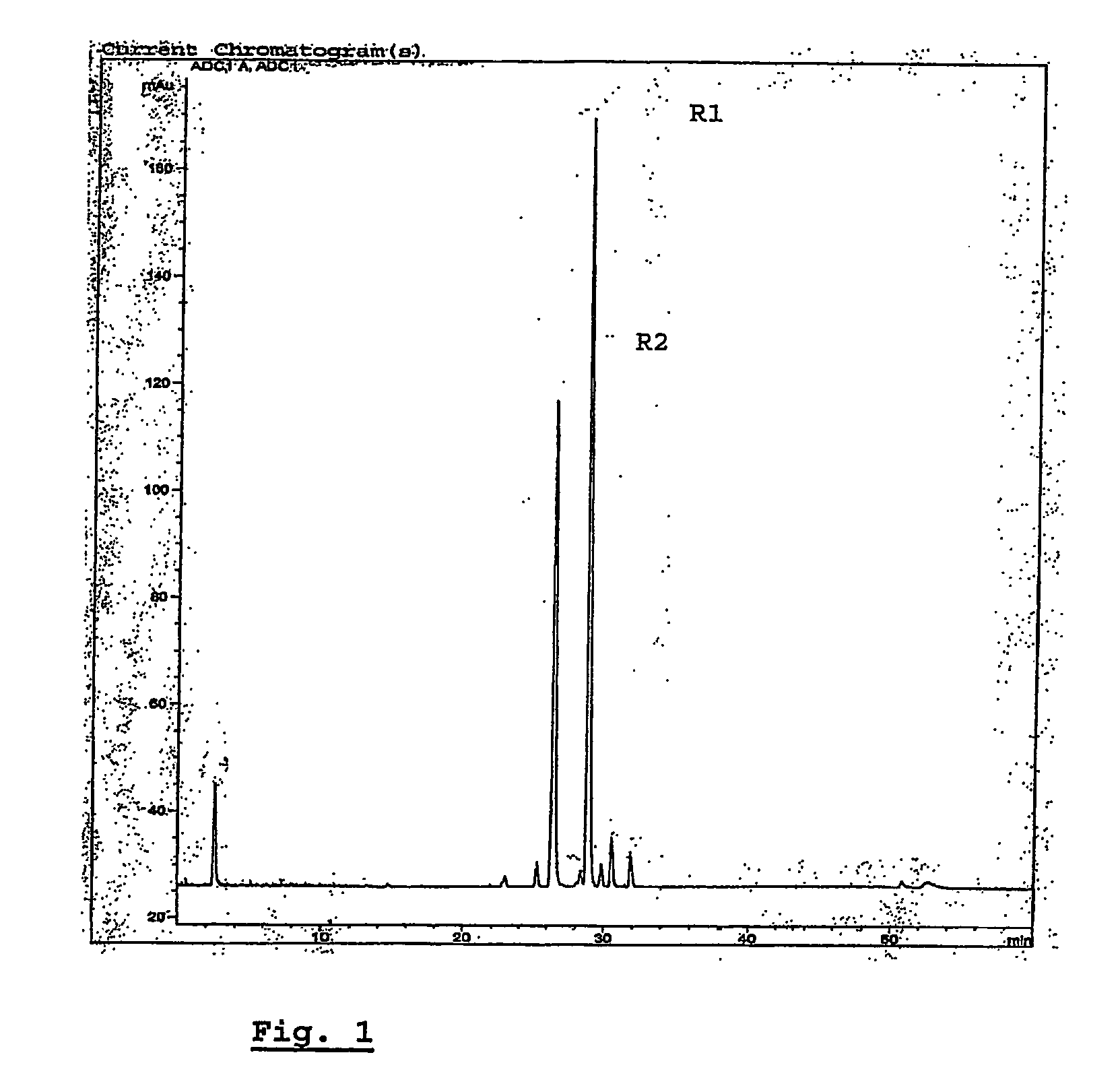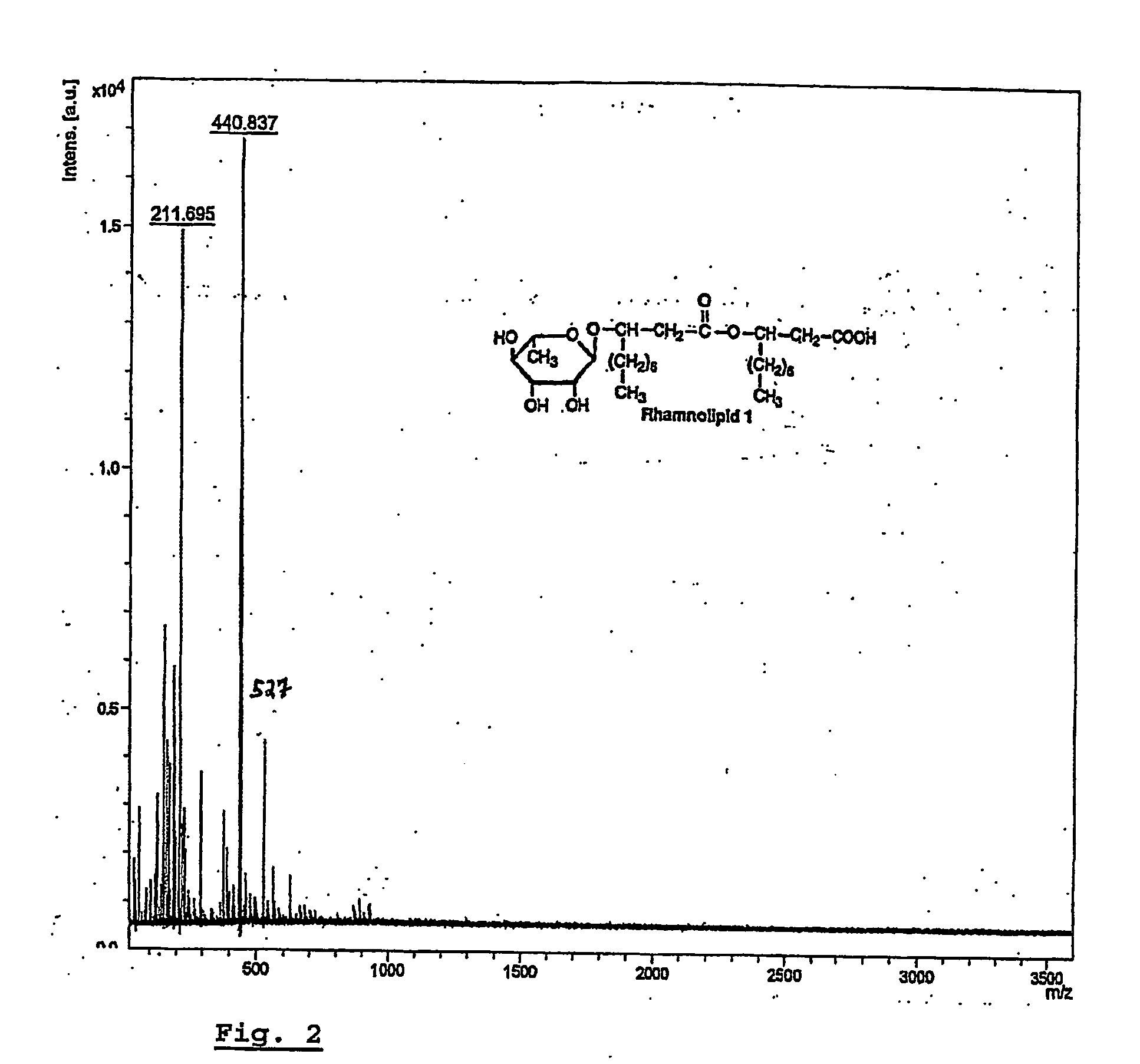Rhamnolipids in bakery products
- Summary
- Abstract
- Description
- Claims
- Application Information
AI Technical Summary
Benefits of technology
Problems solved by technology
Method used
Image
Examples
example 1
Effect of rhamnolipid(s) on the specific loaf volume of bread.
[0039] The baking tests were performed in 100 g bread. The basic recipe was (in parts):
Flour Surbi (Dossche Mills&bakery, Belgium):100Water:58Fresh Yeast (Bruggeman, Belgium):5Sodium Chloride:2Dextrose:2Ascorbic acid:0.004
[0040] The following breadmaking process was used: The ingredients were mixed for 4′4″ in a National 100 g pin-mixer. After bulk fermentation for 20′ at 25° C., 150 g dough pieces were made up using the Euro 200S (Bertrand-Electrolux Baking) set at R7 / L9 and moulded. The dough pieces are proofed at 35° C. for 50′ at 95% relative humidity (RH). Then the breads are baked at 225° C. in a National Manufacturing (Lincoln, Nebr.) oven. It is obvious to one skilled in the art that same end results can be obtained by using equipment of other suppliers.
[0041] The volume of the bread was measured by rapeseed displacement.
[0042] The effect of addition of rhamnolipid(s) on loaf volume was compared to the effec...
example 2
Effect of rhamnolipid(s) on the specific volume of hard rolls.
[0044] The basic recipe was (in parts):
Flour Surbi (Dossche Mills&bakery, Belgium):100Water:62Fresh Yeast (Bruggeman, Belgium):6Sodium Chloride:2Standard improver:1
The standard improver contained (in w / w): Fungal alpha amylase (Bel{acute over ( )}ase A75, Beldem, Belgium) 0.1%, xylanase (Bel{acute over ( )}ase B210, Beldem, Belgium) 0.4%, vitamin C 1.5%, wheat flour 98%. This is an example of the standard improver. Absolute and relative amounts of additives can vary according to local adaptation to wheat flour and process.
[0045] The following breadmaking process was used: The ingredients were mixed in a spiral mixer (Diosna SP 24) for 2 minutes at low speed and for 8 minutes at high speed. After 25′ bulk fermentation, 2000 g dough is weighed and rounded manually. After an intermediate proofing of 10′ at 25° C., the dough is divided in pieces of 66.7 g and moulded (Rotamat). After 5′ fermentation, the dough pieces ar...
example 3
Synergistic effect of lipase and rhamnolipid(s) on the volume of hard rolls.
[0049] The basic recipe was (in parts):
Flour Surbi (Dossche Mills&bakery, Belgium):100 Water:62 Fresh Yeast (Bruggeman, Belgium):6Sodium Chloride:2Ascorbic acid:90 ppmFungal Alpha amylase: 9 ppm
Fungal alpha amylase was Bel{acute over ( )}ase A75 (Beldem, Belgium). Lipase was Lipopan F™ (Trademark Novozymes, Denmark).
[0050] The following breadmaking process was used: The ingredients were mixed in a spiral mixer (Diosna SP 24) for 2 minutes at low speed and for 8 minutes at high speed. After 15′ bulk fermentation, 1500 g dough is divided and rounded and has an intermediate proofing of 10′. After this, dough is divided in dough pieces of 50 g and moulded (Rotamat). The dough pieces are placed on the baking trays and cut in the middle. After 70 minutes proofing the rolls are baked in a deck oven (Miwe) for 20′ at 230° C. with appropriate steaming.
[0051] It is obvious to one skilled in the art that some en...
PUM
 Login to View More
Login to View More Abstract
Description
Claims
Application Information
 Login to View More
Login to View More - R&D
- Intellectual Property
- Life Sciences
- Materials
- Tech Scout
- Unparalleled Data Quality
- Higher Quality Content
- 60% Fewer Hallucinations
Browse by: Latest US Patents, China's latest patents, Technical Efficacy Thesaurus, Application Domain, Technology Topic, Popular Technical Reports.
© 2025 PatSnap. All rights reserved.Legal|Privacy policy|Modern Slavery Act Transparency Statement|Sitemap|About US| Contact US: help@patsnap.com



